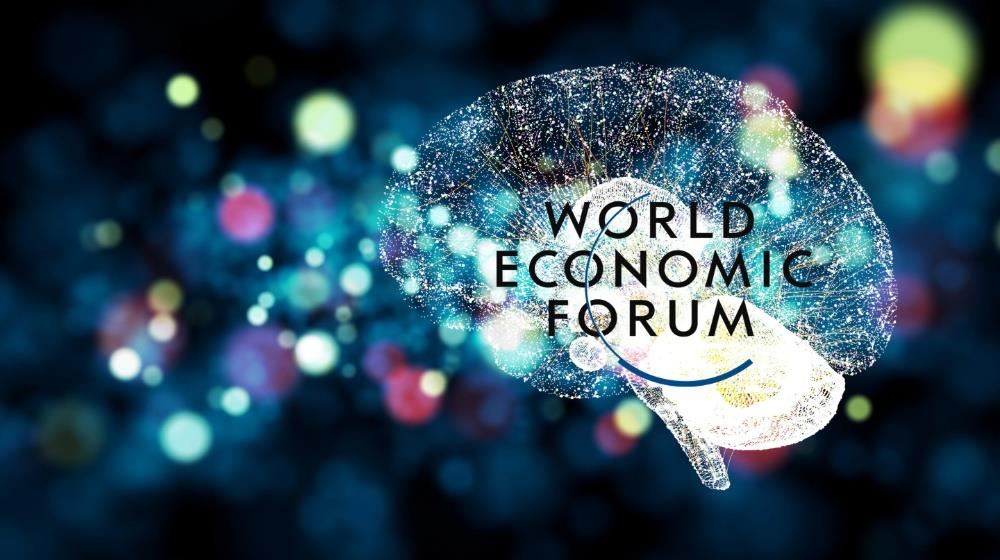An article by the World Economic Forum has explored how Artificial Intelligence (AI) is changing the way medics approach neurological care, prevention and policy – bringing fresh hope for people with conditions like dementia, brain injury and stroke.
As it says, brain health is one of today’s most complex challenges: difficult to assess, expensive to treat and often addressed too late. Neurological conditions are now the leading cause of ill health and disability worldwide, yet most people still lack access to timely brain monitoring.
In a bid to address this global gap, US-based brain4care has developed a technology that has led to a major scientific advance – the ability to monitor intracranial dynamics non-invasively and in real time.
This innovation reveals a previously inaccessible physiological vital sign, offering new possibilities for how healthcare systems and the scientific community approach neurological care, prevention and policy.
The cost of delayed brain monitoring
The phrase “time is brain” is often used in stroke care, but its relevance spans a broad range of neurological disorders – from acute events like traumatic brain injuries and stroke, to chronic conditions such as headache and reversible forms of dementia.
In many cases, symptoms only become noticeable after significant damage has occurred. This is not due to a lack of clinical understanding, but rather the absence of tools that allow for early, continuous monitoring.
Currently, monitoring intracranial pressure (ICP) and compliance still depends on invasive procedures, typically restricted to intensive care units and used only in severe cases. As a result, millions of people at risk of neurological decline go unmonitored.
Without accessible and continuous methods, early warning signs are missed, limiting options for intervention and recovery.
Monitoring brain compliance without surgery
Brain4care’s technology makes it possible to access and interpret ICP waveform data to give a graphic representation and understanding of pressure fluctuations within the skull, without invasive procedures.
These waveforms reflect how the brain responds to changes in volume and pressure; its compliance, a dynamic process shaped by mechanisms like cerebrospinal fluid circulation; and cerebral blood flow regulation. Often, these systems compensate silently until they reach a critical threshold, leading to intracranial hypertension and the risk of irreversible brain damage.
By tracking these waveform patterns over time, clinicians and researchers gain valuable insight into how the brain is functioning, long before clinical symptoms emerge.
AI adds a new layer to this capability. Algorithms can analyse the ICP waveform morphology and extract clinically relevant neurological parameters.
A recent peer-reviewed study published in Digital Medicine showed that AI can correlate non-invasive ICP waveform features with absolute ICP values, expanding the technology's diagnostic potential across different clinical contexts.
As with any new method, broader adoption depends on continued validation, clinician training and integration with existing care pathways. But the foundation is already in place: a reproducible vital sign, a growing body of scientific evidence and a clear need in neurology.
Neurological disorders a growing global clinical and economic burden
According to The Lancet Neurology in 2020, neurological disorders are the top cause of disability-adjusted life years and the second leading cause of premature death worldwide. This includes stroke, dementia, epilepsy, traumatic brain injury, hydrocephalus (a build-up of fluid in the brain) and other chronic conditions. Consider the numbers:
In 2019, stroke affected more than 100 million people, with 12 million new cases and an estimated $2 trillion in global economic impact.
Traumatic brain injuries leave over 50 million people with lasting disabilities and cost the global economy around $400 billion annually.
Discover
What is the World Economic Forum doing to improve healthcare systems?
Normal pressure hydrocephalus (NPH), a condition that requires lifelong management and continues to strain healthcare systems. The estimated prevalence of NPH is 1.5% at age 70, increasing to 5.9% by age 80.
Beyond the clinical and economic impacts lies a deeper challenge: how to act earlier? Without reliable tools to monitor brain physiology in a non-invasive and continuous way, prevention remains out of reach for most systems.
Rethinking how institutions approach brain health
Brain4care's intracranial dynamics monitoring invites a shift in how health systems and public policy view neurological care, not as something reactive, but as something that can and should be addressed earlier.
This could mean:
- New protocols for monitoring patients after head trauma or neurosurgery
- Expanded screening for ageing populations at risk of cognitive decline
- Integration into public health programmes where advanced imaging is unavailable
- Better data to support long-term neurological studies and early-stage clinical trials
From a systems perspective, earlier detection shortens hospital length of stays, reduces intensive care unit readmissions and helps avoid the long-term costs of delayed diagnosis, treatment and any complications resulting from previous injury, illness or trauma.
The ability to monitor intracranial dynamics non-invasively emerged from interdisciplinary research in Brazil, led by scientists, physicians and engineers. This research culminated in discovering a new vital sign indicating that vital functions of the brain are being altered: the cranial pulse.
Starting with this scientific discovery, Brain4care’s technology has since been examined in more than 110 publications, including studies on stroke, dementia, traumatic brain injuries and hydrocephalus, and is clinically validated and approved by both the US Food and Drug Administration and Brazilian regulatory agency ANVISA.
Because it does not rely on expensive or invasive infrastructure, the technology can be used in remote, low-resource or underserved settings, supporting efforts to reduce global health disparities in neurological care.
Monitoring brain compliance key to knowledge of neurological decline
Discovering a new vital sign is rare. With the ability to monitor brain compliance non-invasively and in real time, the scientific and medical communities gain a new tool to understand and protect brain function.
Brain4care’s contribution is not intended to replace traditional methods, but to make visible what has remained hidden: the early physiological shifts that precede neurological decline. By bringing this vital sign into clinical and research practice, we take a step closer to preventing disability instead of reacting to it.
This is not just a medical innovation. It’s an opportunity to rethink how we care for the brain as individuals, institutions and as a global society.
(Source: World Economic Forum)









